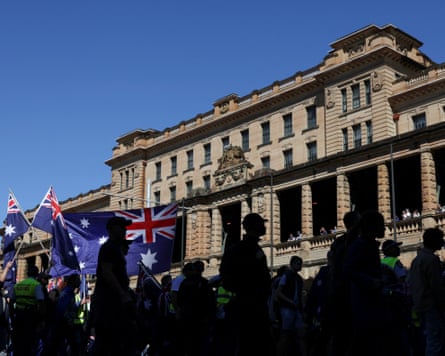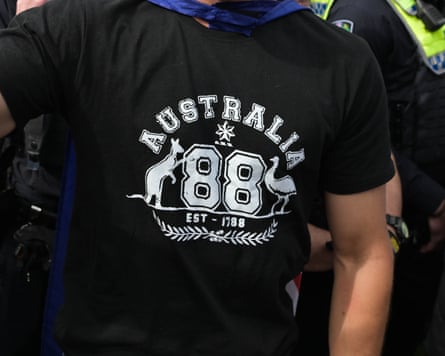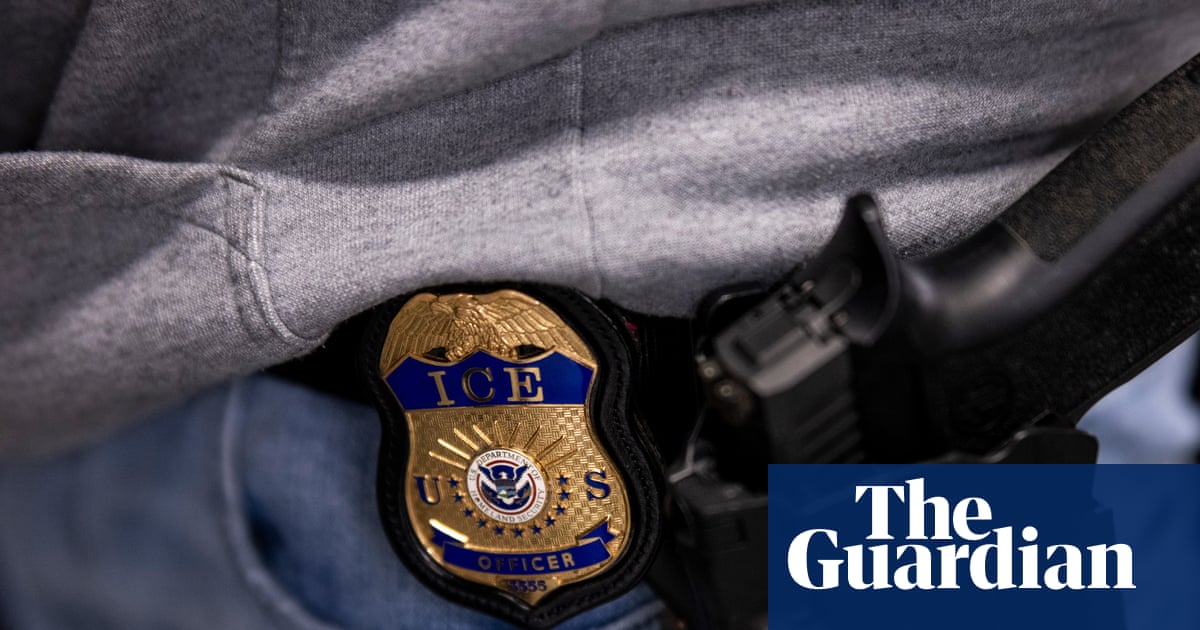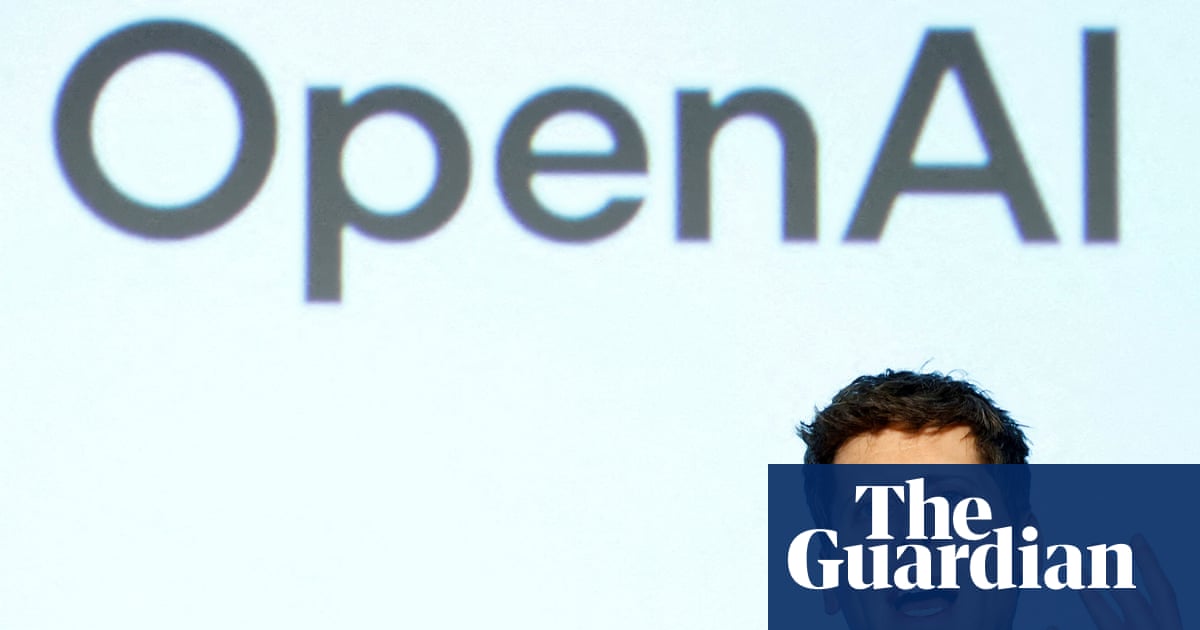At far-right rallies in several Australian cities, neo-Nazis were photographed brandishing megaphones with unusual markings on them – ancient runic symbols, some with associations to white supremacism, while others meant “birch trees”.
Far-right extremists are continuing a Nazi tradition of co-opting ancient Norse mythology to create a grab bag of symbols, allowing them to continue to signal their white supremacy now they can no longer legally display the Hakenkreuz (swastika) or the Nazi salute.
A surge in rightwing extremism in Australia sparked the creation of state and federal laws banning Nazi and hate symbols, predominantly the German swastika, Nazi salute and the double-sig rune that was the logo of the Schutzstaffel (SS).
The original Nazis co-opted the ancient religious symbol of the swastika, which is distinct from the one used by Buddhist, Hindu and Jain communities, for whom it remains a symbol of peace and love. But they also appropriated runes from the Nordic/Germanic/Viking people, out of admiration for their perceived Aryan heritage and warrior tales.
Associate prof Keiran Hardy, a counter-terrorism expert at Griffith University’s criminology institute, says neo-Nazis are avoiding symbols that will lead to criminal penalties, and appropriating symbols in the same way the Nazis did.
“They’re drawing on Nordic runes, symbolising the blue-eyed, blond-haired Aryan ideal of the Nordic, the Scandinavian heritage,” he says.
Sign up: AU Breaking News email
Dr Levi West, an extremism expert and research fellow at the Australian National University, says neo-Nazis have been forced to change their aesthetics.
“They’ve always been reasonably adaptive and a lot of that is borne of the fact that in Europe, especially in Germany, [Nazi symbols] are already illegal,” he says.
“Adaptability has been borne out of necessity.”
Alternative symbols also help from an “operational security perspective”, he adds.
“The more inside baseball that I make my symbols and communications, the harder it is for people to understand what I mean.
“They can claim it’s not what they meant, or that they didn’t know what it meant.”
The federal MP Bob Katter was pictured using a microphone attached to what a prominent neo-Nazi later called a “rune megaphone”, which was held by a man wearing neo-Nazi patches. Katter said a “bloke” kept pushing the megaphone in front of him as he spoke and he “didn’t know [it] had any nasty connotations”.

Hardy says in some ways the use of symbols other than the swastika is “a bit more insidious, because they can sidle up to a politician, maybe unnoticed”.
At the same time, he says, it might help them get their message out – such as through giving speeches at the rallies – without being cancelled or prosecuted. “If they did the same thing with a swastika or an SS symbol people would realise how dangerous it is,” he says.
And legally there are practical limitations, he says. “You can’t start listing every symbol these groups use.”
West says Nazis and neo-Nazis after them have a “long history of appropriating particularly Nordic runes” imbued with esoteric and mystical meanings.
The Jera rune is on the megaphone, and is listed as a hate symbol by the Anti-Defamation League. The ADL says it is an ancient European runic symbol appropriated by ultranationalists in pre-Nazi Germany, then picked up by the Nazi party, then neo-Nazi groups in turn.
“Some white supremacists may use the symbol because its design can conjure the image of a swastika without the symbol actually being a swastika,” it says, adding that runes are used by non-racists including pagans as well, so should be judged in its specific context.
The Life, or Algis rune, is also on the megaphones. The ADL says it became “very popular” after being used by the National Alliance, which was at one point the largest neo-Nazi group in the US.
after newsletter promotion
The logos on neo-Nazi jackets at the 31 August rallies used four arrows, which the Executive Council of Australian Jewry says could be derived from the Tyr rune, which represents the Norse god of war.
Hardy says there might be a deeper meaning in the chosen emblems, or they might be inspired by overseas organisations.
“But they might just be nice-looking symbols that sort of look like a swastika, but don’t breach the law,” he says.
West says in general the neo-Nazis might just be picking up things they’ve seen online, or they might have read deeply, “[but] just because someone displays a symbol doesn’t mean that they’ve got a sophisticated understanding of its etymology”. Hardy agrees, saying we might be trying to read too much into them.

Other symbols used by neo-Nazis as part of their not-so-secret code include the number 88 (H is the eighth letter of the alphabet, so 88 stands for HH, or Heil Hitler), the number 14, which refers to a 14-word supremacist statement, and the Totenkopf, or death’s head image. These are just a tiny fraction of those recorded in the ADL’s database.
The Nazi salute has been outlawed, which leaves them with hand signals including the OK, SS and volksfront hand gestures, among others, to signal their allegiance.
Australian neo-Nazis have also taken to wearing a semi-uniform with a black cap and a black Helly Hansen jacket, with its HH logo referring to Heil Hitler. It’s not the first time fashion has been dragged into the extremist world.
As far back as the 1960s in the UK, skinheads started wearing Fred Perry shirts, appropriating its laurel logo. Neo-fascists continued that tradition to the enduring frustration of the company, which has done its best to distance itself from such subcultures.
Lonsdale clothing was co-opted by the far right in Germany because a half-zipped bomber jacket over the logo shows “NSDA”, a nod to the initials of the German Nazi party – the Nationalsozialistische Deutsche Arbeiterpartei (NSDAP).
Hardy says that according to “tactical displacement” theory, criminalising something like the German swastika risks just pushing it somewhere else. But he says there is evidence to suggest that the role of displacement may be overstated, and that it is useful to remove their most efficient strategies.
“If they all walked down a street waving swastikas, that is an intimidating sight for communities,” he says.
“Now it’s a bunch of guys in black jackets and masks … the effect is lessened on the community – although it is still intimidating.
“Even though there is this displacement to other symbols, the government has robbed them of the scariest one.”

 3 months ago
59
3 months ago
59

















































